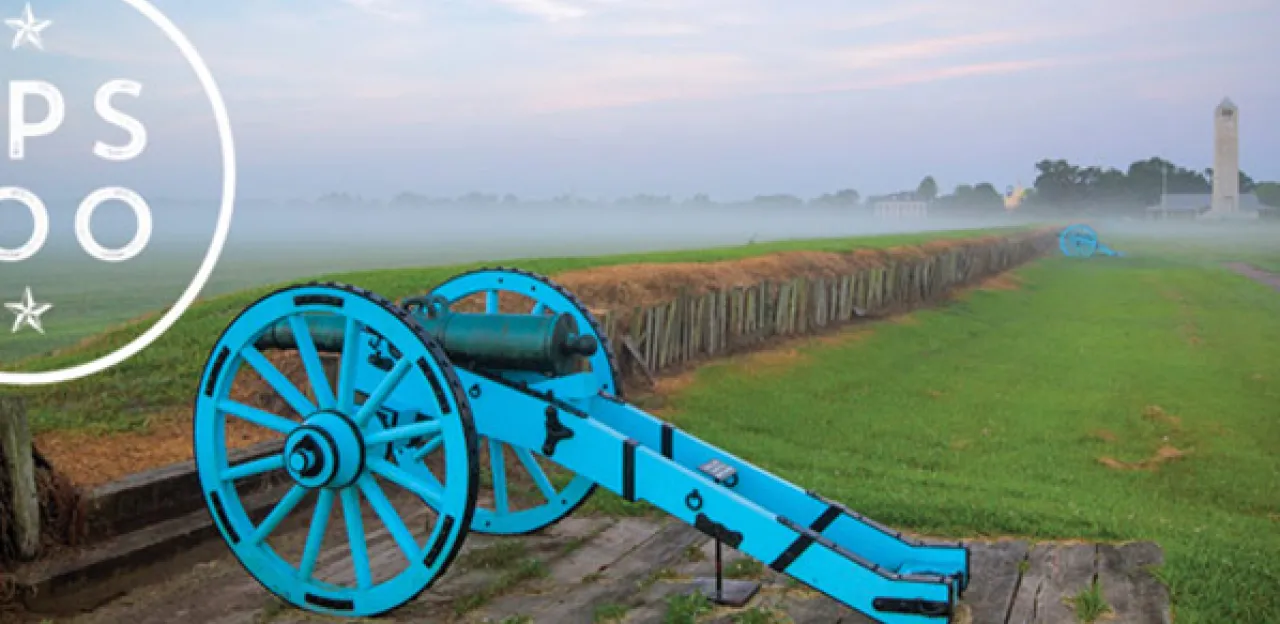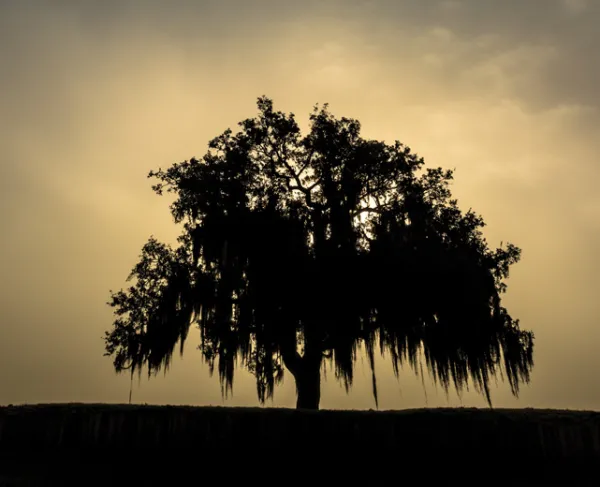Chalmette National Historical Park (Battle of New Orleans)

Lance Hatton, Jean Lafitte National Historical Park and Preserve Superintendent, reflects on the Chalmette Battlefield, site of the War of 1812's Battle of New Orleans in celebration of 100 years of the National Park Service.
Chalmette, La.| January 8, 1815 | Federal Battlefield Park Since 1907 | 143 Acres
What does it take to save the places where the United States became united? What labors from the past allow us today to accept the National Park Service centennial invitation to “Find Your Park” at places like Chalmette Battlefield and Chalmette National Cemetery? In the case of the battlefield, site of the 1815 Battle of New Orleans, and the cemetery, established during the Civil War, it took vision, pecans, soap and generations of community members dedicated to saving their heritage.
The story began as the War of 1812 was drawing to a close. British troops landed just south of New Orleans in December 1814. Their goal was to capture the city, and with it, control of the Mississippi River, the vital waterway on which America’s prosperity and future growth depended. On January 8, 1815, in a sugarcane field at Chalmette, American General Andrew Jackson’s hastily assembled force of U.S. regulars, Choctaw Indians, pirates and volunteers of every race, language, religion and social class from across Louisiana and the southeastern United States defeated the mighty British military. The Battle of New Orleans was hailed as the grand finale to America’s “Second War of Independence” and a tribute to the American ability to overcome differences in pursuit of a common goal.
By the 25th anniversary of the Battle of New Orleans, local citizens were already hard at work making their vision of saving the site for future generations a reality. What is today Chalmette Battlefield, a unit of Jean Lafitte National Historical Park and Preserve, was still a sugarcane field when the preservation project began. Funds from the State of Louisiana and the Jackson Monument Association purchased land and paid for a design in the early 1850s, but work on what is now Chalmette Monument stalled due to the Civil War and financial difficulties.
Meanwhile, just downriver from the monument, Chalmette National Cemetery was established during the Civil War in the area where British cannons had once bombarded the Americans’ defensive rampart. The cemetery became the final resting place of more than 16,000 American troops and family members — many from the Civil War, but others from as late as the Vietnam War and even an unknown Tennessee volunteer who fought at the Battle of New Orleans.
Enter the Louisiana Society of the United States Daughters of 1776 and 1812. In the 1890s, these women decided to make completing the monument their special mission, and they worked with the federal War Department to finish the job. By 1909, the monument and surrounding grounds were completed, and the society had the job of caring for the Chalmette Monument and grounds, while the War Department oversaw Chalmette National Cemetery. Here’s where the pecans come into play: The society financed monument maintenance and a caretaker’s cottage and salary through membership dues, leasing part of the grounds for pasture and selling pecans from the site’s many trees.
Chalmette Monument and Chalmette National Cemetery became Chalmette National Historical Park in 1939, when control of both was transferred from the War Department to the National Park Service. In between the two properties sat Fazendeville, a village established in 1867 by formerly enslaved people who had purchased the land when it was plantation and pasture. The tight-knit African American community thrived for nearly a century, until the National Park Service purchased the land following long, contentious negotiations. Many residents relocated to nearby New Orleans but still maintain strong ties to each other and the land.
In 1978, Congress authorized Jean Lafitte National Historical Park and Preserve; one of its original sites (there are now six) was Chalmette National Historical Park. The 2015 bicentennial of the Battle of New Orleans focused new attention on Chalmette Battlefield’s story, and a recent partnership with the National Trust for Historic Preservation brought new hands — and soap — to Chalmette National Cemetery. More than 800 volunteers from across the area and the country spent March 2016 working at the cemetery: realigning 277 headstones, cleaning more than 5,000 and documenting 1,270. Their example has inspired others to call and ask how they, too, can help.
Vision, dedication, soap and pecans. Generations of community members had the vision to see what was possible, the dedication to make the vision reality, and the ability to use what was available — like soap and pecans — to make a difference. Because of them, thousands have found a place to connect with history at Chalmette Battlefield and Chalmette National Cemetery. Accept the National Park Service centennial invitation to “Find Your Park,” whether it’s the hallowed ground of sacrifice, a place of natural beauty or a site of cultural celebration. Let’s all find our parks and save America’s treasures for generations to enjoy.
Related Battles
71
2,034


